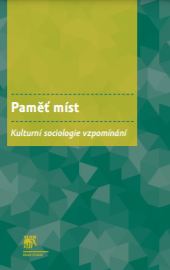Paměť míst: Kulturní sociologie vzpomínání
Memory of Places: A Cultural Sociology of Remembering
Author(s): Csaba Szaló
Contributor(s): Miloš Havelka (Editor), Jiří Šafr (Editor), Jiří Ryba (Editor), Alena Miltová (Editor), Jitka Uhrová (Editor)
Subject(s): Anthropology, Philosophy, Social Sciences, Philosophical Traditions, Sociology, Existentialism, Cultural Anthropology / Ethnology, Phenomenology
Published by: Masarykova univerzita nakladatelství
Keywords: cultural sociology; cultural memory; existentialism; phenomenology; place; history; lived world; lived corporeality;
Summary/Abstract: Sociology teaches us to see the world anew. This book offers a new way of understanding the world by means of a cultural account of remembering. Its ability to help one to see the world anew depends on the persuasiveness of its recounting of our relationship to the past. This foretells the central importance of giving up on thinking separately about mind and body. Thus, concepts used in existential phenomenology are of key consequence for my account of remembering, insofar as this theoretical vocabulary gives us the tools to disclose and express the deeper structure and meaning of experiences related to sensible traces of the past. The increased importance of memory studies, especially the current emphasis placed on cultural trauma and iconicity in cultural sociology, has encouraged me to propose that cultural interpretation must be supplemented with phenomenological descriptions. This is partly because the theoretical model developed by Jeffrey C. Alexander to understand the formation of cultural trauma has revealed that it is no longer possible to adequately interpret our relationship to the past using concepts that rely on cognitive models of remembering. Instead, the social force and performative power of icons implies that our relationship to the past is more akin to indirect forms of expression. As a result, phenomenological aesthetics takes on increased importance for the interpretive strategy of cultural sociology. While cultural sociology can shed light on how language expresses the meanings of material objects, it could do this and more by focusing on a form of expression that captures meanings corresponding to the past without becoming utterly conceptual. Existential phenomenology, in particular, the work of Maurice Merleau-Ponty, brings these mostly disregarded features of expression as well as lived experience into relief. Indirect expressive forms produce meaning not by means of words resulting from the semantic relations assigned to them in language, but instead, as cultural pragmatics demonstrates, meaning is also an effect of how readers or audiences interpret he sense of these works and performances. Hence, cultural forms that depart from the categorical expressions characteristic of conventional language bring to our attention the importance of those meanings which turn up in pre-conceptual perceptual experiences. The view that traces of the past can be given meaning by cultural forms that indirectly disclose them is further developed in three chapters. In “The Silent Memory of the Body” I consider an account of remembering that is adequately responsive to lived experiences, on the basis of the ordinary intuitive point of view from which we understand ourselves as neither disembodied minds nor mechanical machines but as living human beings. It is this bodily point of view as such, that is, our basic unconscious bodily continuity with the world constituting a pre-reflexive understanding of our own experiences, which grounds our immediate awareness of the past. In addition to the background understanding we bring with us from pre-conceptual experience, moreover, we have an intuitive sense of the personal and emotional sphere that is intermingled with our pre-cognitive familiarity with ourselves and the world we inhabit. This interdependence of embodied self and world that manifests itself in places we inhabit is clarified in the second chapter, entitled “Lived Memory of Places”. The significance of places arising from the role of body in our orientation in the world is affirmed in a peculiar manner through the sociological critique of their devastation by the globalised forces of modernity. Precisely in its capacity to eliminate the diversity of places, the prospect of globalised uniformity of economic, political and cultural infrastructures heightens awareness of the particularity of places. This vulnerability of a particular “somewhere” characterised by its singular configurations of meaning and unrepeatable history, is traced in the second chapter as giving rise to cultural forms of nostalgia and homesickness. Human dwelling always contains movements, that is, the rhythmical circulations of human beings, their practices and experiences. The third chapter, “Visible Traces of the Past”, focuses on the topological organisation of places determined by humanly constructed objectifications. Configurations of furniture, fragrance, pictures and stories are like ruins as far as the significance of duration in the crystallisation of places is concerned. Through a phenomenology of place that exposes to view non-categorical sense and the human activities behind the meaning of appearances, the third chapter returns to the concrete things and lived experiences of our everyday life-world which represent the book’s point of departure.
- Print-ISBN-13: 978-80-210-9530-4
- Page Count: 184
- Publication Year: 2020
- Language: Czech
- Table of Content
- Introduction
- Sample-PDF
- eBook-PDF

